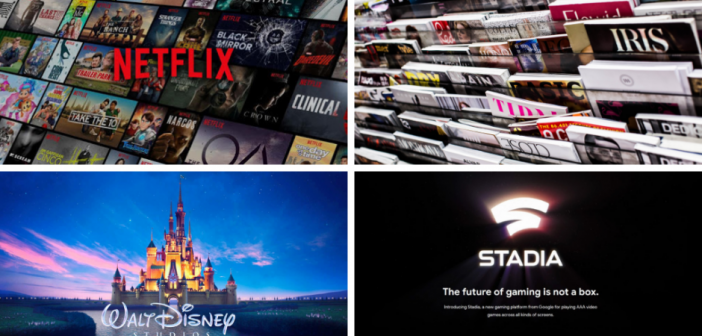Numerous trends are shaping the future of media including the growth in digital advertising, consumers’ love of OTT streaming services, an over-saturation of quality content and the consolidation that the previous trends may forge.
McKinsey has previewed with The Drum its Global Media Report which examines the next five years facing the industry. The full report will be released at the OMR Festival 8 May in Hamburg, Germany.
The Drum explores some of the themes indicated by the research.
Ad spend
The report indicates that over the last half decade, 90% of media spend growth has come from digital – and the focus on mobile platforms will grow in the coming half a decade. Traditional media will not share this growth generally but will see pockets of performance and resilience.
By 2021, pay TV will generate $299bn and exhibit 3% growth, with video games up 12% to $179bn. Over-the-top will reach $53bn (+20%) cinema $49bn (+6%) and physical home video down to $10bn (-13%).
Global advertising revenues will exhibit growth. By 2021, digital advertising will be the largest segment attracting $339bn (+12%), then TV advertising at $209bn (2%), then OOH at $38bn (3%) and then video game advertising at $6bn (+13%).
You can get a good feel for UK ad revenues in the recently released IPA Bellweather report (here).
Adam Bird, global leader of the McKinsey Consumer Tech and Media Practice, told The Drum: “Most of the providers to that space are competing for time and money. What we’re seeing is where consumers are going to continue to invest their time and money is in every sort of digital format. That will continue.”
As we look forward, we will see more direct to consumer services in video and music.
Company for the digital ad duopoly
Bird noted that ad offerings like Amazon’s will come into play in the next five years to closer compete with Facebook and Google.
He said: “Amazon’s advertising business is both search but also a form of digital slotting allowances that companies used to pay offline retailers. It’s at that intersection between advertising, sending promotional spend. Ecommerce becomes a bigger part ever bigger part of the retail mix.”
Philipp Westermeyer, founder of Online Marketing Rockstars (OMR), added: “Speaking with a lot of players in the industry, I hear that digital is too expensive for some advertisers, due to these auctioning systems. There you’re really driven to the edge of your margin, be it Google or to Facebook or Amazon.”
He predicted a modest “renaissance of classical media”. “They don’t use these auctioning models and there is a chance it may be cheaper.”
“All of a sudden you look at cheaper TV, out of home or magazine channels, it’s a surprising development that it will hold or like slow the decline in some places.”
He also noted that the tech startups are moving into physical media.
“We are seeing fully developed startups going through classic retail partners more than they used to. The whole competition on Amazon and other cash crops has become so expensive that it may all of a sudden make sense to develop in retail stores. That is an interesting development that I didn’t see coming a couple of years ago.”
Of course, even Amazon is moving into physical retail…
Subscription services
Consumers love the value proposition, the selection, the personalization and the pricing of subscription services, compared to buying physical media or pay TV packages. Access is continually trumping ownership: music streaming accounted for almost half of music spend in 2017 and will reach 80% by 2022.
Music and video streaming subscriptions will grow faster than 10% per annum.
Bird said: “Consumers are telling us decisively that they like streaming offerings in music and video. That’s not going to change. People will continue to invest in there to get an advantage. There may at some point be an oversupply of offerings. We will see who is going to emerge as the winner there. But I don’t think people are going to stop investing in trying to delight consumers with video content or music streaming content.”
More consolidation
In the subscription space, Bird sees consolidation coming. “We’re going to have even more choice. It could be driven by consumers saying, ‘I don’t really want to subscribe to five offerings instead of a rebundled or reaggregated option’. A combination of consumer preference and economics will probably lead to consolidation in that space.”
He noted that the Disney and Fox, Comcast and Sky mergers were a “huge step” in the direction of continued consolidation and theorized that “more traditional players will bond together to create scale around content, intellectual property, and being able to compete in direct to consumer”.
The tech giants are likely to wade in too.
“Over the next few years, it’ll be interesting to see if they participate in that consolidation, whether that’s purchasing a more traditional media company or extending into new area. You have Google’s move into gaming with Stadia, Apple’s intention to be more competitive in video, and Amazon moving into sports rights.”
And east could meet west amid this trend.
Bird concluded: “The top 10 consumer tech companies globally by market cap are divided between the US and China so the reality is that they will be the shapers. Tencent, Alibaba, and Baidu, they’ve had plenty to do in their home market but you will start to see them moving abroad.”
–
This article first appeared in www.thedrum.com
Seeking to build and grow your brand using the force of consumer insight, strategic foresight, creative disruption and technology prowess? Talk to us at +9714 3867728 or mail: info@groupisd.com or visit www.groupisd.com

